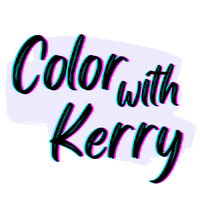Craving a new challenge? Feeling like you’ve exhausted all of the possibilities with coloring pages? Ready to take your passion to the next level? It may be time to switch up your coloring techniques! Trying out new ways to color can open up a whole world of possibilities and help you explore your creativity in fresh new ways. Not sure where to start? Here are four coloring techniques to get you started.
Technique #1: single-pass coloring
The first technique is single-pass coloring. Single-pass coloring means applying one layer of color over the entire surface. This technique is simple and straightforward, but it can also be very effective. Single-pass coloring is a great way to achieve an even, consistent layer of color. It’s also a good way to avoid overworking your colors and making them muddy.
To try this technique, start by choosing a light source. You can use natural light from a window or artificial light from a lamp. Once you have your light source, choose one color and apply it evenly over the surface. When you’re finished, move on to the next color. Continue until you’ve used all the colors you want.
Technique #2: multiple-pass coloring
If you’re looking for more of a challenge, try multiple-pass coloring. This technique involves applying multiple layers of color to create depth and dimension. Multiple-pass coloring can be challenging because it requires you to be strategic about which colors you use and in what order. But the results can be stunning!
To try this technique, start by selecting two or three colors that work well together. Then, apply the first color in one area and the second color in another area. Work back and forth between the two colors until you’re happy with the results. If you want to add a third color, repeat the process until you’re satisfied with your work.
Technique #3: blending colors
Blending colors is another great way to add depth and dimension to your work. This technique involves combining two or more colors together to create a new, third color. Blending colors is a great way to add interest and variety to your work. It can also help you create new colors that you might not be able to create on your own.
To blend colors, start by choosing two complementary colors—colors that are opposite each other on the color wheel. For example, you could choose yellow and purple, blue and orange, or red and green. Apply each color in small sections side by side until they meet in the middle. Then, using a clean brush, blend the two colors together until they form a new, third color.
Technique #4: experimenting with different tools
One final way to switch up your coloring techniques is by experimenting with different tools. In addition to traditional brushes, there are many other ways to apply color including pens, markers, crayons, pastels, and even spray paint! Each tool will produce a different result so it’s fun to experiment with different combinations until you find something that works for you.
Trying out new coloring techniques is a great way to explore your creativity and find new ways to express yourself through art! Give some a try on your next project.

